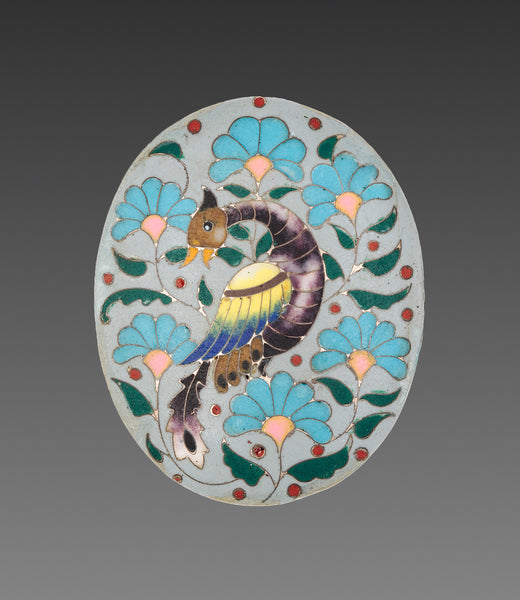A Palette of Elegance: Vintage Enamel Jewelry and Its Artistic Allure
In the realm of vintage jewelry, enamel stands out as a captivating medium that has been used for centuries to infuse pieces with color, vibrancy, and intricate artistry. Vintage enamel jewelry, with its meticulous craftsmanship and artistic allure, forms a palette of elegance that has transcended time. Join us as we explore the rich history and enduring appeal of vintage enamel jewelry, where the fusion of metal and colored glass creates wearable works of art.

The Art of Cloisonné: Ancient Craftsmanship Unveiled
Cloisonné enamel, an ancient technique dating back to the Byzantine Empire, involves creating compartments (cloisons) on metal surfaces and filling them with colored enamel. This method, perfected in China and later embraced by artisans in the Islamic world and Europe, produces jewelry pieces with vibrant, jewel-like colors and intricate patterns. Vintage cloisonné pieces often feature detailed floral motifs, mythical creatures, and geometric designs.
Champlevé Mastery: Carving Colors into Metal
Champlevé enamel, another ancient technique, involves carving recesses into metal surfaces and then filling them with enamel. This method allows for a bold, sculptural effect where the metal acts as a framework for the vibrant enamel colors. Vintage champlevé jewelry often showcases richly adorned crosses, religious icons, and heraldic symbols, reflecting the cultural influences of the time.

Plique-à-Jour: Translucent Radiance in Jewelry
Plique-à-jour, a technique reminiscent of stained glass, involves creating a delicate, translucent effect by filling openwork metal frames with enamel. Vintage plique-à-jour pieces emulate the luminosity of stained glass windows, often featuring delicate floral patterns, butterflies, and ethereal scenes. The result is jewelry that captures the play of light and color with remarkable beauty.
Bas-Relief Enameling: Adding Dimension to Design
Bas-relief enameling involves building up layers of enamel to create a three-dimensional effect. Vintage pieces utilizing this technique boast intricate scenes and portraits with depth and dimension. Often found in portrait brooches and pendant necklaces, bas-relief enamel adds an extra layer of artistry to the jewelry, creating miniature masterpieces.
Revival of Renaissance Techniques: Limoges Enamel
Limoges enamel, named after the French city renowned for its exquisite enamelwork, experienced a revival during the Renaissance. This technique involves painting intricate scenes onto enamel surfaces. Vintage Limoges enamel jewelry often features miniature landscapes, portraits, and mythological themes, encapsulating the artistic spirit of the Renaissance era.
Revivalist Art Deco Elegance: Enamel in the Roaring Twenties
The Art Deco era witnessed a resurgence of interest in enamel, with jewelry designers incorporating bold geometric patterns, vivid colors, and stylized motifs. Enamel played a prominent role in Art Deco pieces, enhancing the sleek and modern aesthetic of the time. Vintage Art Deco enamel jewelry often includes striking bracelets, brooches, and earrings that showcase the era's exuberant elegance.

Vintage enamel jewelry, with its diverse techniques and artistic expressions, remains a testament to the enduring allure of color and craftsmanship. Whether through ancient cloisonné, delicate plique-à-jour, or the bold designs of the Art Deco era, enamel has left an indelible mark on the world of jewelry. Each piece tells a story of the artisan's skill, the cultural influences of its time, and the timeless beauty that enamel imparts to wearable works of art. In this palette of elegance, vintage enamel jewelry continues to captivate, offering a kaleidoscope of colors and intricate designs that transcend the boundaries of fashion and time.





